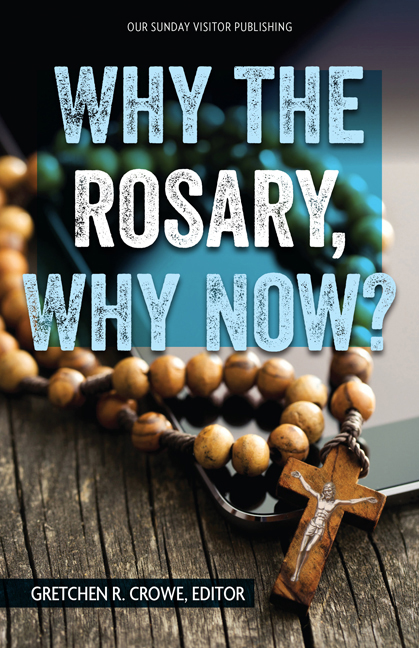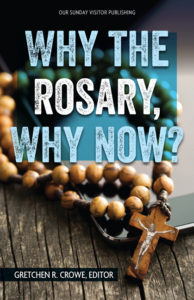
 One thing we can truly know about the Rosary is that nothing about it is arbitrary. Every piece of the Rosary is designed with a purpose, from the specific reflection on Christ’s life, to the specific prayers, to the repetition and to the physicality of the beads themselves.
One thing we can truly know about the Rosary is that nothing about it is arbitrary. Every piece of the Rosary is designed with a purpose, from the specific reflection on Christ’s life, to the specific prayers, to the repetition and to the physicality of the beads themselves.
‘Why the Rosary, Why Now?’
Author: Gretchen R. Crowe, Editor
Publisher: Our Sunday Visitor Publishing
Length: 149 pages
Release Date: May 11, 2017
Available at: Kino Library
The explanation of these things is found in the new book, “Why the Rosary, Why Now?” edited by Gretchen R Crowe.
Within the pages, we find the best writing from Ven. Pope John Paul I, Pope St. John Paul II, Ven. Pope Pius XII, Pope Leo XIII and Ven. Archbishop Fulton Sheen, among those teaching something on the time-honored devotion.
When I read the title, which asked “Why Now?” I was a bit perplexed, and a bit perturbed: Why NOT now? Why ever? The question, however, does have a specific purpose, which Crowe reveals later.
The Rosary developed over a long period of time throughout Christian history and when it was fully realized, legend has it that the holy mother delivered it to St. Dominic de Guzmán, founder of the Order of Preachers, i.e. one of my bosses!
Since then, it has been used as a normal, though intense, devotion and is considered a sacramental.
In the first chapter, Crowe deals with the practical uses of the Rosary, about the repetition and the physicality of the devotion. In one story, she tells of a Protestant who stated that she could never become Catholic because of things like the Rosary and its repetition. She said she couldn’t trust anyone who repeated things like prayers to be sincere. The priest, whom she told, asked, realistically, if the woman’s fiancé had told her that he loved her. The priest asked the woman when the last time was and she replied that he had said it earlier that afternoon. The priest asked the woman if that was the only time he said that to her and she replied, “no” he said it often. The priest, of course, then told her that she should not trust him because since he kept repeating it, he was not sincere.

This is true with regard to the Rosary because, as Crowe points out, we are saying to Jesus and to the Holy Mother, “I love you,” whenever we pray the Rosary. Further, the rhythmic pattern of the Rosary’s prayers are effective for the brain; the rhythmic pattern allows us to relax and the physicality of the beads allows us to make tactile connections with the prayer.
Crowe goes on to use the writings of the various popes to help us understand why the Rosary is so important. In one chapter she talks about breaking through the noise of the world. In another, she calls our praying it a deeper devotion to the Church. In a third, the Rosary strengthens families, and often leads to an increase in Christian discipleship. Using the Rosary we can pray for peace in the world, we can fight evil, we can honestly combat secularism and, in every sense of the term, become saints ourselves.
Crowe finishes the book with a “How-to” do the Rosary and lists all the prayers of the Rosary for the reader’s benefit.
Though this isn’t the type of book I traditionally like to review, it is one worthy of readership because of the centrality of the Rosary to our prayer lives. We should read the book, especially in this month of Mary, pray the Rosary and increase our spiritual lives. It’s that simple.





